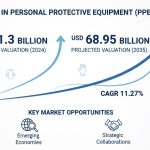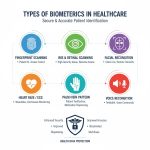Fueling the Future: An In-Depth Exploration of the Global Liquefied Petroleum Gas Market
In the vast and complex tapestry of the global energy sector, specific threads are woven so deeply into the fabric of our daily lives that they often go unnoticed. Liquefied Petroleum Gas (LPG) is one such threat. From the familiar hiss of a gas stove in a bustling city apartment to the gentle warmth radiating from a patio heater on a cool evening, LPG is an unsung hero of modern energy. It is a versatile, portable, and relatively clean-burning fuel that bridges the gap between traditional, often polluting, energy sources and the renewable technologies of tomorrow. But beyond its common applications, the Liquefied Petroleum Gas Market is a dynamic and evolving landscape, shaped by geopolitical forces, technological innovation, and a collective global push towards a more sustainable future. This article delves deep into this vibrant market, exploring the forces that propel it forward, the trends that are redefining its future, and the immense opportunities that lie on the horizon.
Overview of the Liquefied Petroleum Gas Market
The Global Liquefied Petroleum Gas Market represents a cornerstone of the world’s energy mix, providing a crucial power source for billions across residential, commercial, industrial, and transportation sectors. This market, fundamentally driven by the demand for a cleaner and more efficient fuel alternative, is on a significant growth trajectory. According to meticulous analysis by Vantage Market Research, the market was valued at a substantial USD 152.92 billion in 2021. Looking ahead, it is projected not only to grow but to flourish, reaching an estimated value of USD 199.15 billion by 2030. This expansion is underpinned by a steady Compound Annual Growth Rate (CAGR) of 4.50% during the forecast period. The primary catalysts for this impressive growth are multifaceted, including strong government initiatives promoting cleaner cooking fuels in developing nations, the increasing adoption of autogas as a cost-effective and lower-emission vehicle fuel, and the indispensable role of LPG as a chemical feedstock.
Get a Sample Copy:- https://www.vantagemarketresearch.com/liquefied-petroleum-gas-market-1825/request-sample
Top 10 Key Players
- Rabian Oil Co.
- China Gas Holdings Ltd.
- Chevron Corporation
- Bharat Petroleum Corporation Limited
- Flaga Gmbh
- Repsol
- Kleenheat
- Total SE
- Reliance Industries Limited
- Exxon Mobil Corporation
The Intricate Dance of Market Dynamics
The trajectory of the Liquefied Petroleum Gas Market is not a simple linear progression; rather, it’s a complex dance influenced by a host of interconnected drivers and restraints. On one hand, the market is powerfully propelled by the global imperative for cleaner energy. Governments, particularly in the Asia-Pacific and African regions, are promoting LPG adoption through subsidies and awareness campaigns to combat indoor air pollution caused by the burning of biomass, such as wood and charcoal. This social and environmental driver is a potent force, improving health outcomes and quality of life for millions. Simultaneously, the burgeoning petrochemical industry provides a robust demand stream, utilizing LPG as a vital feedstock for producing plastics and other synthetic materials. The inherent portability and ease of storage of LPG also make it an ideal off-grid energy solution, catering to remote communities and industries far from established natural gas pipelines. Conversely, the market faces significant headwinds. Its intrinsic link to crude oil and natural gas production means it is subject to the same price volatility and geopolitical uncertainties that plague the broader fossil fuel markets. A sudden spike in oil prices can directly translate to higher LPG costs for consumers, potentially dampening demand. Furthermore, the increasing competitiveness of alternative energy sources, including piped natural gas (PNG) in urban areas and rapidly advancing renewable technologies like solar and electric cooking, poses a long-term challenge. This dynamic interplay between powerful growth drivers and significant market pressures defines the current state and future path of the global LPG industry.
Key Segmentation
By Source
- Refinery (22.0%)
- Associated Gas (27.5%)
- Non-Associated Gas (52.5%)
By Applications
- Residential
- Commercial
- Agriculture
- Industrial
- Transportation
- Other Applications
By Region
- North America
- Europe
- Asia Pacific
- Latin America
- Middle East & Africa
Top Trends Shaping the Future of LPG
As the energy world pivots towards sustainability and efficiency, the Liquefied Petroleum Gas Market is undergoing a fascinating transformation, driven by innovative trends that are set to redefine its role. Perhaps the most significant of these is the emergence and growing acceptance of BioLPG, also known as renewable propane. Produced from a variety of renewable feedstocks, including waste materials, cooking oil, and plant-based oils, BioLPG is chemically identical to conventional LPG but boasts a dramatically lower carbon footprint—up to 80% less. This positions LPG not just as a transition fuel but as a potential long-term sustainable solution, aligning it with stringent decarbonization goals, especially in Europe. Another transformative trend is the rapid digitalization of the LPG supply chain. The days of consumers unexpectedly running out of gas are numbered, thanks to the advent of smart cylinders equipped with IoT sensors that monitor fuel levels in real-time and can even trigger automatic reorders. Mobile applications have streamlined the entire customer experience, from ordering and payment to tracking deliveries, enhancing convenience, and building brand loyalty. This tech infusion extends to logistics, where data analytics and AI-powered routing are optimizing delivery networks, reducing costs, and enhancing safety for distributors. Finally, the expansion of LPG applications into new frontiers, such as its use as a marine fuel to comply with IMO 2020 sulfur regulations, showcases the industry’s adaptability and quest for new growth avenues.
Top Report Findings
A thorough examination of the market reveals several crucial insights that are essential for stakeholders to understand. Here are some of the top findings from comprehensive market reports:
- The residential sector remains the undisputed leader in LPG consumption, primarily driven by its use for cooking and water heating in developing countries.
- The Asia-Pacific region is confirmed as the fastest-growing and largest market for Liquefied Petroleum Gas, with India and China at the forefront of this expansion.
- Government subsidies and policies aimed at replacing traditional cooking fuels are one of the most powerful and direct drivers of market growth globally.
- The autogas sector shows promising growth, especially in countries with favorable tax regimes and a well-developed refueling infrastructure.
- Volatility in the price of crude oil and natural gas is identified as the primary restraint affecting the market’s stability and consumer pricing.
- The development and commercialization of BioLPG are creating a new, sustainable dimension for the market, though production scale remains a challenge.
- Technological integration, including smart meters and digital ordering platforms, is significantly enhancing operational efficiency and customer satisfaction.
Challenges
Despite its strong growth prospects, the Liquefied Petroleum Gas Market must navigate a series of significant challenges. The foremost among these is the persistent issue of infrastructure deficit, particularly in the developing world. While demand may be high, the lack of adequate storage facilities, cylinder bottling plants, and robust last-mile distribution networks in rural and remote areas can create a major bottleneck, hindering market penetration. Safety perceptions also present a continuous hurdle. Although LPG has an excellent safety record when handled correctly, public fear regarding flammability and potential leaks necessitates ongoing public education, stringent safety regulations, and investment in safer equipment, all of which contribute to operational costs. Furthermore, the market faces intensifying competition not only from the expanding natural gas grid but also from the rapidly decreasing costs of renewable energy alternatives. In many regions, the upfront cost of a solar-powered cooking or heating system is becoming increasingly competitive with the recurring cost of LPG refills, posing a direct threat to LPG’s market share in the long run.
A World of Untapped Opportunities
For every challenge, a corresponding opportunity often emerges, and the Liquefied Petroleum Gas Market is ripe with potential. The largest and most immediate opportunity lies in the vast, untapped rural markets of Africa and Southeast Asia, where billions still rely on harmful traditional fuels. By focusing on innovative distribution models, such as micro-distributorships and pay-as-you-go systems enabled by mobile technology, companies can unlock these massive consumer bases. The rise of BioLPG presents a paradigm-shifting opportunity for the industry to rebrand itself as a key player in the circular and green economy. Scaling up BioLPG production could allow the sector to secure its future in a carbon-neutral world. Another significant opportunity is the growing use of LPG for power generation in off-grid locations, providing a reliable and cleaner alternative to diesel generators for telecom towers, small industries, and remote communities. The marine sector also offers a promising new frontier, as LPG emerges as a viable, cleaner-burning marine fuel to help the shipping industry meet its stringent environmental targets.
Key Questions Answered in the Report
A comprehensive market report on Liquefied Petroleum Gas seeks to provide clarity on the industry’s most pressing questions, including:
- What is the projected market size and growth rate for the global Liquefied Petroleum Gas Market through 2030?
- What are the primary factors driving the demand for LPG in the residential, industrial, and autogas sectors?
- How are government policies and subsidies in key regions like Asia-Pacific influencing market dynamics?
- Which region is expected to exhibit the highest growth rate, and what are the reasons behind this trend?
- What are the major challenges, such as price volatility and infrastructural gaps, that could restrain market growth?
- Who are the major players in the global LPG market, and what are their key business strategies?
- What is the potential impact of emerging trends like BioLPG and digitalization on the future of the industry?
- What are the key untapped opportunities for growth in emerging markets and new application areas?
Regional Analysis: A Tale of Three Markets
The global Liquefied Petroleum Gas (LPG) market presents a diverse picture when viewed through a regional lens, with North America, Europe, and the Asia-Pacific each telling a unique story of development and demand. The Asia-Pacific region stands as the undisputed engine of global growth. This dominance is fueled by a confluence of factors: massive populations, rapid urbanization, and proactive government policies. In countries like India, the Pradhan Mantri Ujjwala Yojana scheme has successfully connected millions of rural households to clean LPG, drastically reducing reliance on polluting biomass. Similarly, Indonesia has long supported the use of LPG for cooking. China, with its vast industrial and petrochemical sector, is a massive consumer of LPG as a feedstock. The region’s growth is fundamentally a story of social and economic transformation, with LPG playing a pivotal role in this transformation. In stark contrast, North America represents a mature and stable market. Here, the demand is primarily driven by the well-established residential sector for heating and outdoor grilling, and critically, by the petrochemical industry, which leverages the abundant supply of LPG from the region’s shale gas boom. The autogas market is comparatively smaller but holds potential for niche fleet applications. Europe presents yet another distinct profile, one heavily influenced by policy and environmental consciousness. While residential use remains stable, the most dynamic segment is autogas, with countries such as Poland, Turkey, and Italy boasting significant numbers of LPG-powered vehicles due to favorable taxation and lower fuel costs. Furthermore, Europe is the cradle of the BioLPG movement, with regulatory pressures for decarbonization driving investment and innovation in renewable LPG, positioning the region as a trendsetter for the industry’s sustainable future.
Recent Developments in the Liquefied Petroleum Gas Market
The period from 2024 to 2025 is proving to be a dynamic phase for the global LPG market, characterized by strategic investments, technological adoption, and a growing focus on sustainability. Key players are actively reshaping the landscape in response to evolving energy demands and regulatory environments.
- Accelerated Investment in BioLPG Production: A major development is the significant ramp-up in investments for BioLPG (also known as renewable propane) production facilities, particularly in Europe and North America. Major energy companies are entering strategic partnerships to secure renewable feedstocks and are constructing new plants or retrofitting existing ones to produce this lower-carbon alternative. This push is driven by corporate sustainability goals and government mandates aimed at decarbonizing the heating and transportation sectors.
- Strategic Infrastructure Expansion in Emerging Markets: Recognizing the immense growth potential, leading LPG distributors are channeling significant capital into building and expanding import terminals, storage depots, and bottling plants across the Asia-Pacific and Africa regions. In 2024, several new large-scale import terminals are scheduled to become operational in countries such as India, Bangladesh, and Nigeria, with the aim of improving supply chain reliability and supporting government initiatives to increase LPG penetration in rural households.
- Digital Transformation and IoT Integration: The “smart gas” revolution is gaining serious momentum. Companies are increasingly deploying IoT-enabled smart cylinders and tank monitoring systems that provide real-time data on consumption levels. This enables predictive ordering, optimized delivery routes, and improved safety. The 2024-2025 period is witnessing a wider rollout of sophisticated, customer-facing mobile applications that integrate ordering, payment, and support, significantly enhancing the end-user experience.
- Growth of LPG as a Marine Fuel: In response to the International Maritime Organization’s (IMO) stringent emissions regulations, the adoption of LPG as a marine bunker fuel is on the rise. An increasing number of new-build Very Large Gas Carriers (VLGCs) are being equipped with dual-fuel engines that can run on LPG, reducing sulfur oxide, particulate matter, and CO2 emissions. This trend is expanding beyond LPG carriers to other vessel types, creating a new and substantial demand stream for the market.
- Market Consolidation and Strategic Alliances: The global LPG market is witnessing continued consolidation. Larger, multinational corporations are acquiring smaller, regional players to expand their geographic footprint, achieve economies of scale, and gain access to established distribution networks. These strategic mergers and acquisitions are particularly prevalent in fragmented markets, leading to a more streamlined and competitive landscape.
- Focus on LPG for Off-Grid Power Generation: There is a renewed focus on positioning LPG as a reliable and cleaner power source for off-grid and poor-grid locations. It is being promoted as a superior alternative to diesel generators for powering telecom towers, agricultural operations, remote communities, and small industrial facilities, offering lower emissions, reduced noise, and greater operational efficiency.
![[Market Research Reports] – Research Google News Blog | VMR.Biz](https://www.vmr.biz/wp-content/uploads/2022/12/logo-removebg-preview.png)











